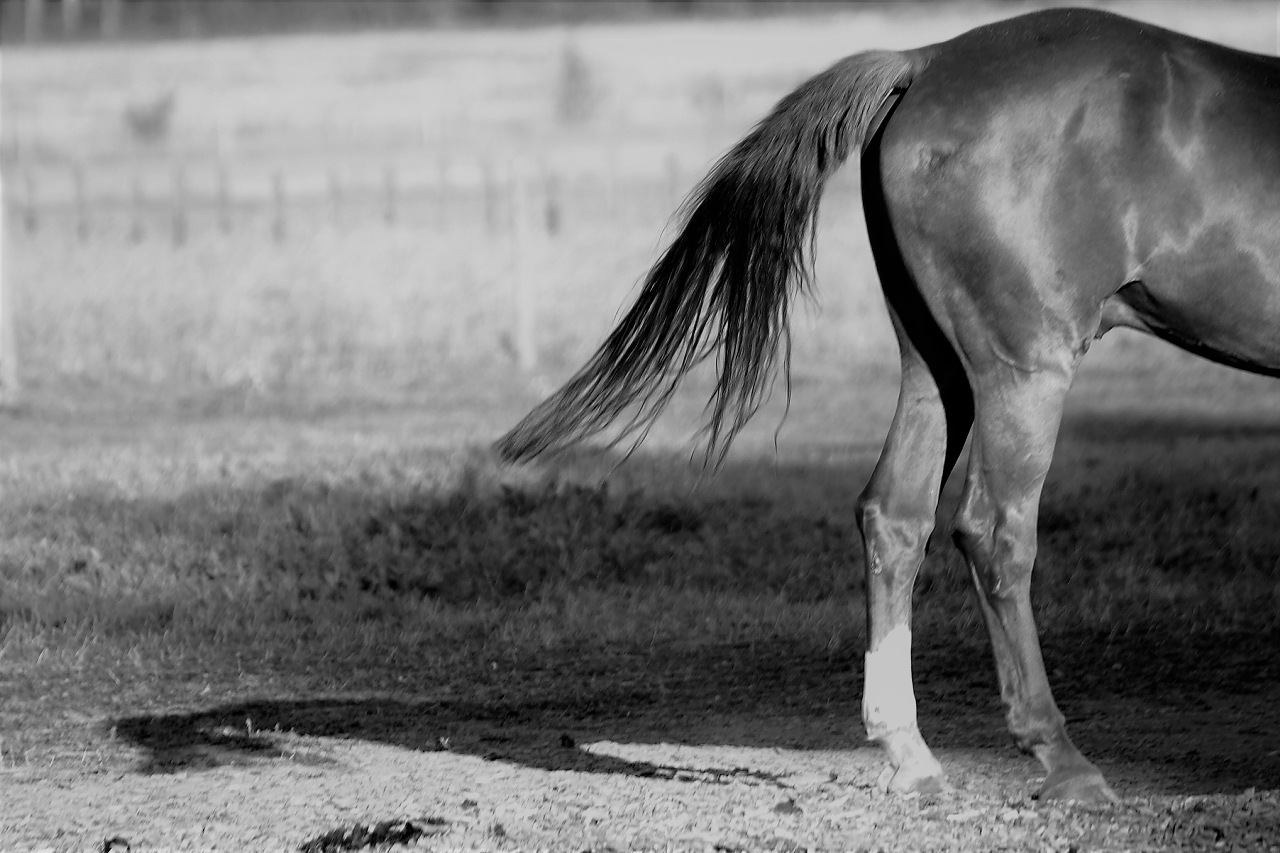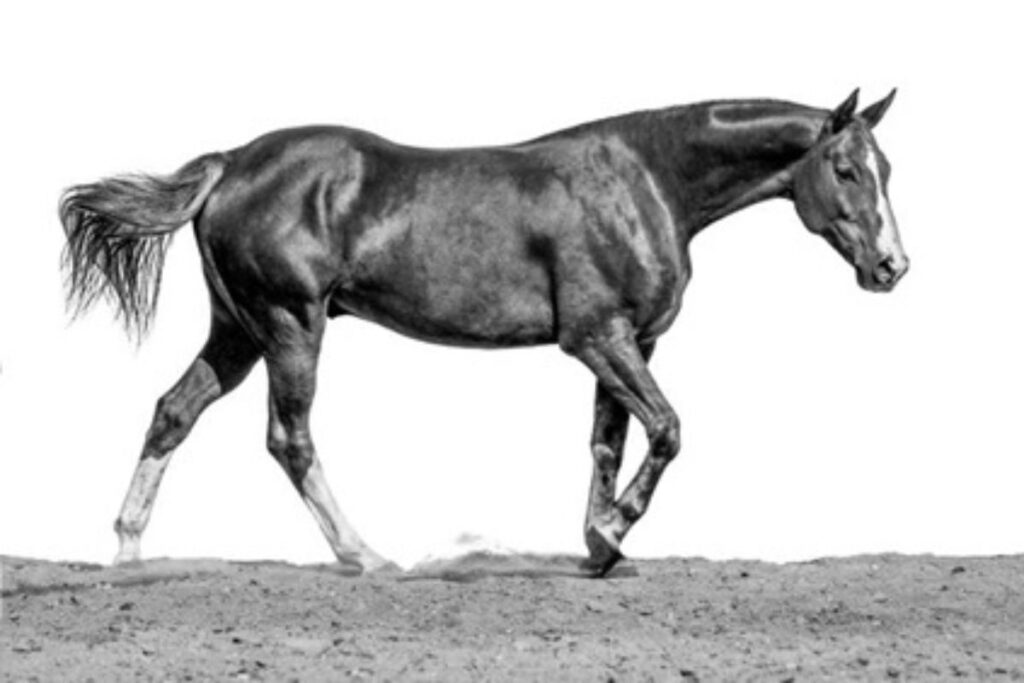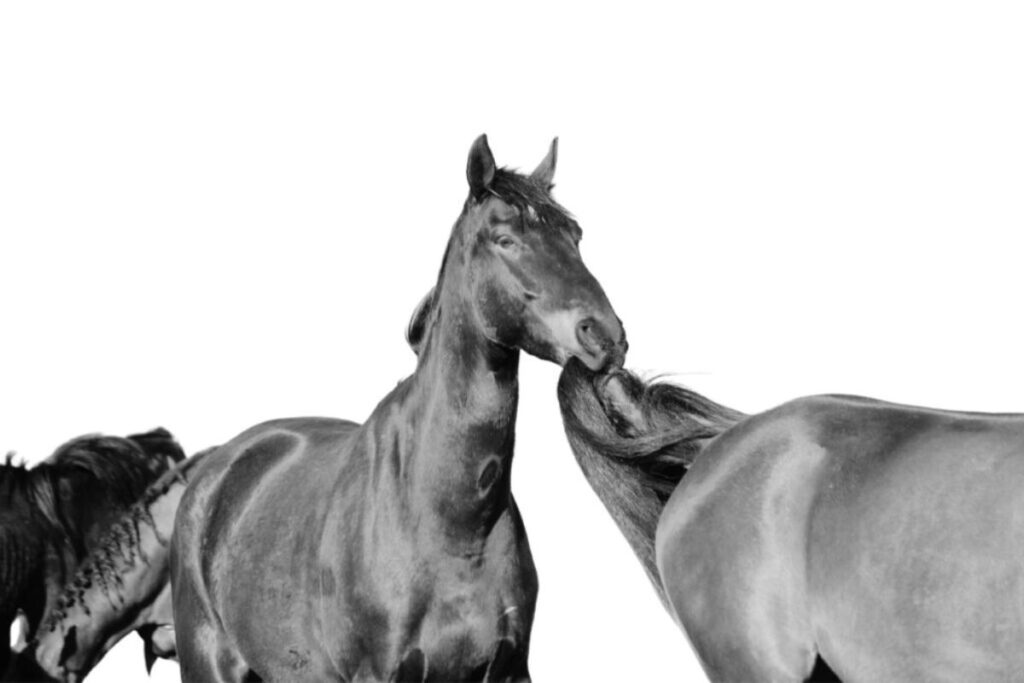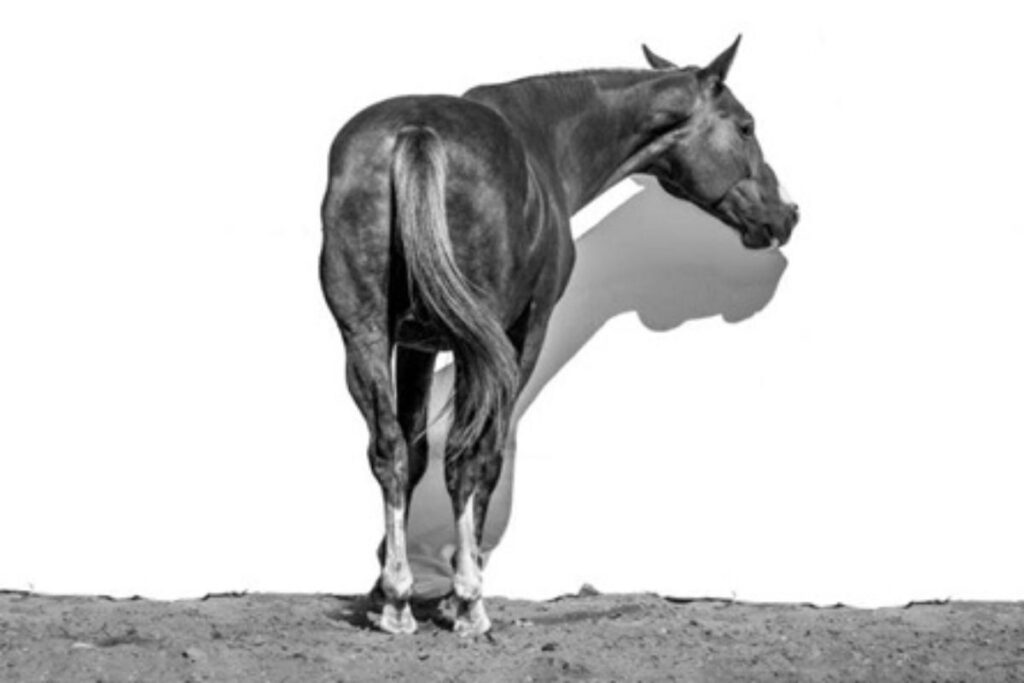Menu

Many of us do not give the horse´s tail much thought. But in fact, it can tell us quite a bit about the mood, general health and stress level of the horse. The horse's tail is an extension of the horse's spine. Therefore, problems in the tail can cause problems elsewhere in the body. Just as tail problems can be a symptom that something is wrong elsewhere in the body. Here we take a closer look at the social significance of the tail, its anatomy and care, and give you 20 facts for inspiration.
You may also like to read: Study: How much your horse blinks reveals its level of stress
# 1: The horse's tail actually begins between the ears. It is part of the horse's spine. The spine begins at the neck joint itself between the ears and runs in an S down over the neck, over the back, to the croup and ends out at the tip of it.
# 2: The spine consists of 7 cervical vertebrae, 18 thoracic vertebrae, 6 lumbar vertebrae and the sacrum. But it is actually different how many tail vertebrae each horse breed has. The thoroughbred Arabian typically has 5 lumbar vertebrae and 15 tail vertebrae against the 6 lumbar vertebrae and 18-20 lumbar vertebrae in other horse breeds.
# 3: The horse's tail is a super fly swatter. Because the it consists of so many joints, the tip of the tail can swing in a different direction and speed than the rest of it. This means that the horse easily can hit annoying flies and biting insects. The horse can swing it three times faster than a gravity-driven pendulum to be exact.
# 4: Does your horse have a crooked tail? It does not have to be a problem, but there is still good reason to pay attention. Skewed tail guidance is most commonly seen in Arabian horses, many of which are born with a tail that naturally falls to one side. If the crooked tail guidance is genetically determined, the horse usually has no problems relating to it. If, on the other hand, a horse develops a skewed tail guidance later in life, either suddenly or gradually, it should give cause for concern.
# 5: Skewed tail guidance caused by muscle tension is typically caused by two muscles: the semitendinosus muscle and the semimembranosus muscle, both of which have attachments to the bones of it. When these muscles are tense, they pull it to the side. It is really important to straighten. It can cause a displacement of the pelvis, reduce the movement of the horse in the hindquarters and cause it to swing the leg more to one side than the other.

# 6: If you want to feel your horse's tail vertebrae, lift it up a little. Feel under it and on the side of the root where they are most evident. Let the hand slide all the way down until there is no more bone left. The tail vertebrae can be very difficult to count and feel at intervals, as they get smaller and smaller the further down the tail you get.
# 7: You can easily check if your horse has a flexible back via the tail. Stand on the side of the horse. Grab the tail root of your horse and gently sway it from side to side. Your horse should confidently sway with and let the spine make a gentle and unbroken ‘wave motion’ from the loins and up to the mane. If the horse stiffens, or shows less movement in certain areas of the back, it may have muscle tension or saddle problems.
# 8: The horse uses clear signals through posture and movements to signal how it is feeling. Here the it is an important part of the body language. The horse can, for example, put it between its legs if it is scared and or feels inferior.
# 9: Maybe you've seen a horse cantering in the field with a high raised tail. It does so because it is happy or attentive. It can thus be used to check the mood of the horse.
# 10: A tail that whips from side to side tells that the horse is annoyed or confused. If the horse whips hard with its tail, for example in a dressage test, it can mean that something is bothering it. Also, it can influnce a judge's overall rating during a dressage test.

# 11: When horses in the wild eat tail hair, it is usually because they are attacked by parasites in the stomach. The hairs pull the worms with them into the intestines, so that they are eventually excreted with the droppings.
# 12: Although it may be tiring that the tail is muddy and tangled on a daily basis, one should consider whether it is always a good idea to braid it. The reason is that your horse uses it to communicate with its fellow species. With its tail, it tells when the others should stay away and when they might like to get closer.
# 14: There are different traditions within the different riding disciplines. In showjumpers, the it is often cut to a length so that it ends just above the code or between the code and the has. The tails of the dressage horses are usually longer and go all the way down under the code. In the dressage sport, some riders bounce the tail up on the sides of the root to create a mark that highlights the muscles in the hindquarters.
# 15: In the trotting sport, cutting the tail is supposed to bring bad luck.
# 16: It is forbidden in Denmark to dock horses' tails. In some countries, however, they are still cut or docked. It is mostly done because it is a tradition within that horse breed. A tradition stemming from a need for the horse's tail not to get in the way when used in front of a wagon or working in the field.
# 17: An old superstition is that if the horse has straw, hay or other dirt in its tail when you ride, you will fall off.

# 18: Be careful when using a hairbrush in a filtered tail. You may risk tearing the hair out, and your horse will eventually end up with a thin and dull tail. Instead, start with a soft brush and plenty of conditioner spray before getting started with the hairbrush. And even better start with your hands by just separating one hair after another.
# 19: A horse scratching its tail may be due to several things. It can be due to summer eczema, dry skin or worms. Itching in the summer months can be due to allergy, where the root has been bitten. The horse has subsequently developed an allergy. To get rid of it, you can wash the tail with a disinfectant shampoo and spray with plenty of insect spray.
# 20: There are many factors that affect the horse's hair growth. Breed, genetics, nutrition, care and health all have an impact on how fast it grows.